[English] 日本語
 Yorodumi
Yorodumi- PDB-8b01: Cryo-EM structure of the Tripartite ATP-independent Periplasmic (... -
+ Open data
Open data
- Basic information
Basic information
| Entry | Database: PDB / ID: 8b01 | |||||||||
|---|---|---|---|---|---|---|---|---|---|---|
| Title | Cryo-EM structure of the Tripartite ATP-independent Periplasmic (TRAP) transporter SiaQM from Photobacterium profundum in a nanodisc | |||||||||
 Components Components |
| |||||||||
 Keywords Keywords | TRANSPORT PROTEIN / TRAP / elevator / secondary transporter / sialic acid | |||||||||
| Function / homology |  Function and homology information Function and homology informationC4-dicarboxylate transport / transmembrane transporter activity / plasma membrane Similarity search - Function | |||||||||
| Biological species |  Photobacterium profundum SS9 (bacteria) Photobacterium profundum SS9 (bacteria) synthetic construct (others) | |||||||||
| Method | ELECTRON MICROSCOPY / single particle reconstruction / cryo EM / Resolution: 3.03 Å | |||||||||
 Authors Authors | Davies, J.S. / North, R.A. / Dobson, R.C.J. | |||||||||
| Funding support |  New Zealand, 2items New Zealand, 2items
| |||||||||
 Citation Citation |  Journal: Nat Commun / Year: 2023 Journal: Nat Commun / Year: 2023Title: Structure and mechanism of a tripartite ATP-independent periplasmic TRAP transporter. Authors: James S Davies / Michael J Currie / Rachel A North / Mariafrancesca Scalise / Joshua D Wright / Jack M Copping / Daniela M Remus / Ashutosh Gulati / Dustin R Morado / Sam A Jamieson / ...Authors: James S Davies / Michael J Currie / Rachel A North / Mariafrancesca Scalise / Joshua D Wright / Jack M Copping / Daniela M Remus / Ashutosh Gulati / Dustin R Morado / Sam A Jamieson / Michael C Newton-Vesty / Gayan S Abeysekera / Subramanian Ramaswamy / Rosmarie Friemann / Soichi Wakatsuki / Jane R Allison / Cesare Indiveri / David Drew / Peter D Mace / Renwick C J Dobson /      Abstract: In bacteria and archaea, tripartite ATP-independent periplasmic (TRAP) transporters uptake essential nutrients. TRAP transporters receive their substrates via a secreted soluble substrate-binding ...In bacteria and archaea, tripartite ATP-independent periplasmic (TRAP) transporters uptake essential nutrients. TRAP transporters receive their substrates via a secreted soluble substrate-binding protein. How a sodium ion-driven secondary active transporter is strictly coupled to a substrate-binding protein is poorly understood. Here we report the cryo-EM structure of the sialic acid TRAP transporter SiaQM from Photobacterium profundum at 2.97 Å resolution. SiaM comprises a "transport" domain and a "scaffold" domain, with the transport domain consisting of helical hairpins as seen in the sodium ion-coupled elevator transporter VcINDY. The SiaQ protein forms intimate contacts with SiaM to extend the size of the scaffold domain, suggesting that TRAP transporters may operate as monomers, rather than the typically observed oligomers for elevator-type transporters. We identify the Na and sialic acid binding sites in SiaM and demonstrate a strict dependence on the substrate-binding protein SiaP for uptake. We report the SiaP crystal structure that, together with docking studies, suggest the molecular basis for how sialic acid is delivered to the SiaQM transporter complex. We thus propose a model for substrate transport by TRAP proteins, which we describe herein as an 'elevator-with-an-operator' mechanism. | |||||||||
| History |
|
- Structure visualization
Structure visualization
| Structure viewer | Molecule:  Molmil Molmil Jmol/JSmol Jmol/JSmol |
|---|
- Downloads & links
Downloads & links
- Download
Download
| PDBx/mmCIF format |  8b01.cif.gz 8b01.cif.gz | 160.7 KB | Display |  PDBx/mmCIF format PDBx/mmCIF format |
|---|---|---|---|---|
| PDB format |  pdb8b01.ent.gz pdb8b01.ent.gz | 117.1 KB | Display |  PDB format PDB format |
| PDBx/mmJSON format |  8b01.json.gz 8b01.json.gz | Tree view |  PDBx/mmJSON format PDBx/mmJSON format | |
| Others |  Other downloads Other downloads |
-Validation report
| Summary document |  8b01_validation.pdf.gz 8b01_validation.pdf.gz | 1.4 MB | Display |  wwPDB validaton report wwPDB validaton report |
|---|---|---|---|---|
| Full document |  8b01_full_validation.pdf.gz 8b01_full_validation.pdf.gz | 1.4 MB | Display | |
| Data in XML |  8b01_validation.xml.gz 8b01_validation.xml.gz | 37.1 KB | Display | |
| Data in CIF |  8b01_validation.cif.gz 8b01_validation.cif.gz | 52.9 KB | Display | |
| Arichive directory |  https://data.pdbj.org/pub/pdb/validation_reports/b0/8b01 https://data.pdbj.org/pub/pdb/validation_reports/b0/8b01 ftp://data.pdbj.org/pub/pdb/validation_reports/b0/8b01 ftp://data.pdbj.org/pub/pdb/validation_reports/b0/8b01 | HTTPS FTP |
-Related structure data
| Related structure data |  15775MC 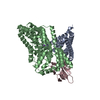 7qhaC  7t3eC C: citing same article ( M: map data used to model this data |
|---|---|
| Similar structure data | Similarity search - Function & homology  F&H Search F&H Search |
- Links
Links
- Assembly
Assembly
| Deposited unit | 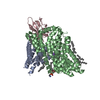
|
|---|---|
| 1 |
|
- Components
Components
-Putative TRAP-type C4-dicarboxylate transport system, ... , 2 types, 2 molecules AB
| #1: Protein | Mass: 19748.367 Da / Num. of mol.: 1 Source method: isolated from a genetically manipulated source Source: (gene. exp.)  Photobacterium profundum SS9 (bacteria) Photobacterium profundum SS9 (bacteria)Strain: SS9 / Gene: VC1778, PBPRA2280 / Production host:  |
|---|---|
| #2: Protein | Mass: 45573.605 Da / Num. of mol.: 1 Source method: isolated from a genetically manipulated source Source: (gene. exp.)  Photobacterium profundum SS9 (bacteria) Photobacterium profundum SS9 (bacteria)Strain: SS9 / Gene: SMB20297, PBPRA2279 / Production host:  |
-Antibody , 1 types, 1 molecules C
| #3: Antibody | Mass: 54867.098 Da / Num. of mol.: 1 Source method: isolated from a genetically manipulated source Source: (gene. exp.)  Strain: G27 / Gene: hopQ, HPG27_1120 / Production host:  |
|---|
-Non-polymers , 7 types, 15 molecules 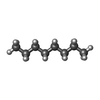
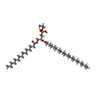
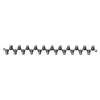
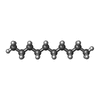

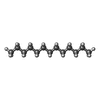
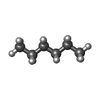






| #4: Chemical | ChemComp-OCT / #5: Chemical | #6: Chemical | ChemComp-TWT / | #7: Chemical | #8: Chemical | #9: Chemical | ChemComp-TRD / | #10: Chemical | ChemComp-HEX / | |
|---|
-Details
| Has ligand of interest | Y |
|---|---|
| Has protein modification | Y |
-Experimental details
-Experiment
| Experiment | Method: ELECTRON MICROSCOPY |
|---|---|
| EM experiment | Aggregation state: PARTICLE / 3D reconstruction method: single particle reconstruction |
- Sample preparation
Sample preparation
| Component |
| ||||||||||||||||||||||||
|---|---|---|---|---|---|---|---|---|---|---|---|---|---|---|---|---|---|---|---|---|---|---|---|---|---|
| Source (natural) |
| ||||||||||||||||||||||||
| Source (recombinant) |
| ||||||||||||||||||||||||
| Buffer solution | pH: 8 | ||||||||||||||||||||||||
| Specimen | Conc.: 1 mg/ml / Embedding applied: NO / Shadowing applied: NO / Staining applied: NO / Vitrification applied: YES | ||||||||||||||||||||||||
| Vitrification | Instrument: FEI VITROBOT MARK IV / Cryogen name: ETHANE / Humidity: 100 % / Chamber temperature: 277 K |
- Electron microscopy imaging
Electron microscopy imaging
| Experimental equipment |  Model: Titan Krios / Image courtesy: FEI Company |
|---|---|
| Microscopy | Model: FEI TITAN KRIOS |
| Electron gun | Electron source:  FIELD EMISSION GUN / Accelerating voltage: 300 kV / Illumination mode: FLOOD BEAM FIELD EMISSION GUN / Accelerating voltage: 300 kV / Illumination mode: FLOOD BEAM |
| Electron lens | Mode: BRIGHT FIELD / Nominal defocus max: 2000 nm / Nominal defocus min: 400 nm |
| Image recording | Average exposure time: 2 sec. / Electron dose: 70.9 e/Å2 / Film or detector model: GATAN K3 BIOQUANTUM (6k x 4k) / Num. of grids imaged: 1 / Num. of real images: 8127 |
- Processing
Processing
| CTF correction | Type: PHASE FLIPPING AND AMPLITUDE CORRECTION |
|---|---|
| 3D reconstruction | Resolution: 3.03 Å / Resolution method: FSC 0.143 CUT-OFF / Num. of particles: 499085 / Symmetry type: POINT |
 Movie
Movie Controller
Controller



 PDBj
PDBj










